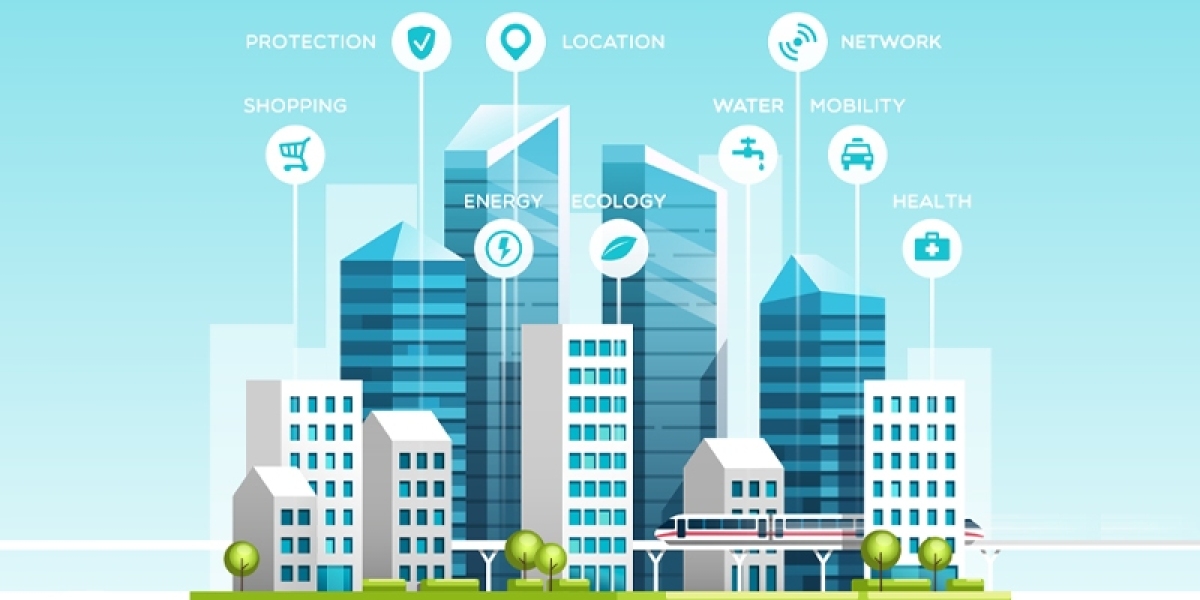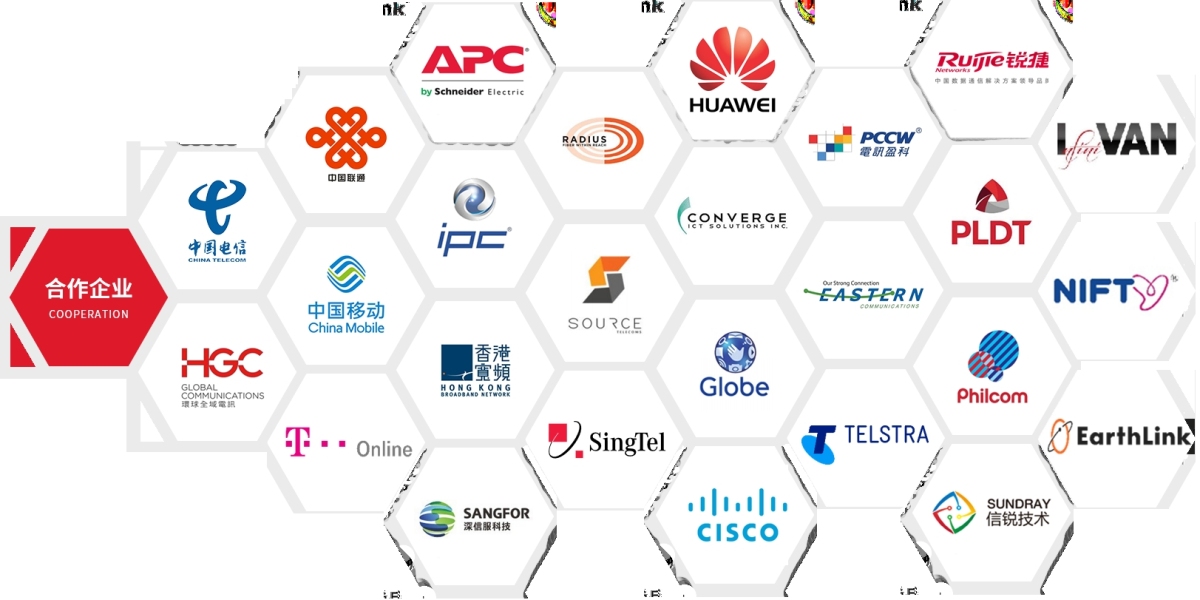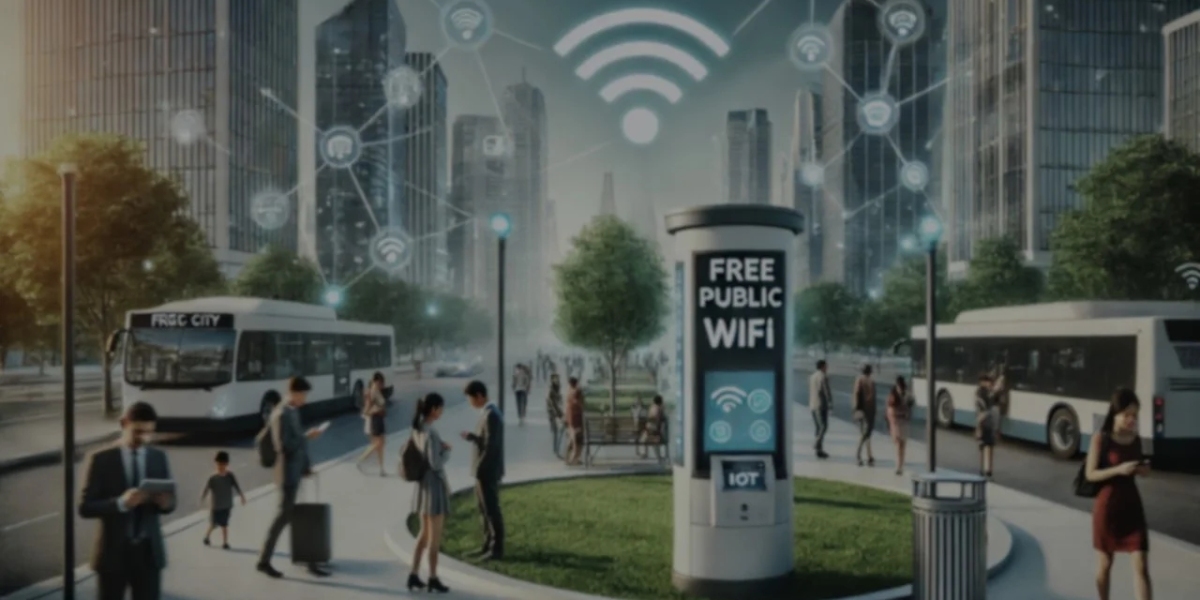Introduction: Why Cloud Infrastructure Matters for LGUs
Core Components of Government Cloud Systems
Benefits of Cloud Adoption for Philippine LGUs
Real-World Use Cases in Smart Cities
Data Security and Compliance Considerations
Integration with Other Smart City Technologies
Roadmap for LGU Cloud Adoption
Frequently Asked Questions (FAQs)
SEO Tags
现在我将继续撰写第1节内容:
1. Introduction: Why Cloud Infrastructure Matters for LGUs
In the age of digital governance, Philippine local government units (LGUs) are facing increasing pressure to modernize public services, manage data efficiently, and respond quickly to citizens' needs. Traditional IT infrastructure — often reliant on local servers, paper-based processes, and fragmented systems — is no longer sufficient to support this transformation.
That’s where cloud infrastructure for local governments comes into play.
Cloud platforms offer a scalable, secure, and cost-effective foundation for LGUs to:
Store and process large amounts of data
Deliver digital services to citizens in real time
Collaborate across departments and with national agencies
Enable innovations like AI-powered analytics, IoT, and e-governance tools
Whether it's running an online permit system, monitoring barangay complaints, or operating a municipal command center — cloud technology is the backbone that enables smart and responsive public administration.
As national initiatives like the Department of Information and Communications Technology (DICT)'s Philippine Cloud First Policy and E-Government Master Plan (EGMP) continue to roll out, the cloud is no longer optional — it’s essential.
In this article, we’ll explore how LGUs can adopt cloud infrastructure effectively and securely, and how SUNIWAY’s integrated platforms are helping make this possible.
Core Components of Government Cloud Systems
A well-designed cloud infrastructure for LGUs is more than just online storage. It’s a full-stack ecosystem that supports digital transformation, automation, resilience, and compliance — tailored to the needs of public service delivery in the Philippines.
Let’s break down the key architectural components and layers that make up an effective government cloud system:
Cloud Service Models (IaaS, PaaS, SaaS)
| Layer | Description | LGU Use Case Example |
|---|---|---|
| IaaS (Infrastructure as a Service) | Virtual servers, networks, and storage | Hosting websites, data warehouses, CCTV streaming |
| PaaS (Platform as a Service) | Tools for app development and deployment | E-permit portals, grievance management platforms |
| SaaS (Software as a Service) | Cloud-based applications and tools | Microsoft 365, Google Workspace, online treasury systems |
Many LGUs start with SaaS (email, docs, ERP), then progress to IaaS and PaaS as digital maturity increases.
Multi-Cloud and Hybrid Cloud Architecture
Multi-cloud: Using services from multiple cloud providers (e.g., AWS + Azure) to avoid vendor lock-in.
Hybrid cloud: Combining on-premise servers with cloud services — especially for sensitive or mission-critical data.
This is useful for LGUs with legacy IT investments, allowing them to gradually transition to full cloud without disrupting current operations.
Data Storage & Management Layer
Cloud storage buckets: For storing documents, photos, forms, CCTV footage
Databases (SQL/NoSQL): For structured barangay-level data, population records, budgeting
Data lakes: For big data, such as IoT sensor data from smart city devices
Many LGUs benefit from centralized cloud databases instead of isolated spreadsheets or desktop apps.
Identity & Access Management (IAM)
User roles: Admin, editor, viewer, citizen portal user
Single sign-on (SSO) for all LGU apps
Multi-factor authentication (MFA) for critical staff (treasurer, records, command center)
IAM systems ensure only authorized personnel access sensitive data — and every action is logged.
Monitoring and Analytics Tools
Cloud-native tools provide:
Real-time usage dashboards
System uptime and latency metrics
Alert systems for outages or unauthorized access
AI-powered performance recommendations
This allows LGUs to run services proactively, not reactively.
Integration and Interoperability Layer
Supports open APIs and data exchange between:
Treasury systems ↔ budgeting dashboards
E-permitting portals ↔ DILG or DICT validation systems
Citizen apps ↔ barangay command centers
Solar monitoring platforms ↔ cloud dashboards
Cloud infrastructure becomes the data hub for all city-level digital services.
Backup, Archiving, and Disaster Recovery
Philippine LGUs are prone to disasters — typhoons, earthquakes, and even cyberattacks. Cloud platforms include:
Automatic data backups (hourly/daily)
Geo-redundancy (e.g., copies in Manila + Singapore)
Rapid disaster recovery plans
This ensures continuity of government (CoG) even during crises.
These components work together to deliver a resilient, modular, and scalable infrastructure that fits both the realities of a barangay-level office and the ambitions of a provincial capital.
Benefits of Cloud Adoption for Philippine LGUs
Adopting cloud infrastructure offers transformative benefits for Local Government Units (LGUs) in the Philippines — from improved public service delivery to operational cost savings and disaster resilience. With the shift to digital governance, cloud platforms are no longer just a technical upgrade — they’re a strategic necessity.
Improved Service Delivery to Citizens
24/7 access to government services: Citizens can apply for permits, file complaints, or access records online anytime.
Faster response times: Automated workflows and real-time data access help barangay and city staff resolve issues quickly.
Mobile-friendly platforms: Many SaaS tools offer mobile versions, allowing outreach to remote or underserved communities.
Example: A cloud-hosted e-permit portal enables citizens to apply online, track status, and receive updates — without visiting city hall.
Cost Efficiency and Budget Optimization
Lower upfront costs: No need to purchase and maintain physical servers or data centers.
Pay-as-you-go pricing: LGUs pay only for the storage, computing power, or bandwidth they use.
No hardware obsolescence: Cloud providers handle upgrades, reducing the long-term IT maintenance burden.
Result: Annual IT budgets can be redirected toward service improvement, not equipment maintenance.
Scalability for Growing LGUs
As municipalities evolve into cities and expand digital services, cloud infrastructure:
Scales on demand: Instantly increase capacity during elections, tax season, or disaster response.
Supports more users and data: No need to re-architect the system for growth.
Facilitates multi-barangay integration: Combine datasets from across localities for better planning and reporting.
Example: A provincial capital can onboard all its municipalities into a shared cloud system.
Enhanced Data Security and Privacy
Industry-grade encryption: Data is protected both in transit and at rest.
Redundant storage: Prevents loss during power outages, hardware failures, or fire.
Compliance readiness: Aligns with RA 10173 (Data Privacy Act), DICT's Cloud First Policy, and ISO/IEC 27001.
Note: Cloud providers often offer more security features than small LGU on-prem servers can afford.
Disaster Recovery and Continuity of Government (CoG)
Given the Philippines’ exposure to typhoons, earthquakes, and other hazards:
Cloud backup ensures minimal data loss.
Failover systems keep platforms online, even if local offices are damaged.
Disaster recovery sites are often hosted in multiple regions (e.g., Metro Manila + Cebu + Singapore).
Use case: During Typhoon Odette, LGUs with cloud-based systems were able to continue operations remotely even when city halls were inaccessible.
6. Real-Time Insights and Analytics
Data dashboards allow officials to monitor services live — traffic, complaints, energy usage, citizen queries.
AI-powered analytics identify trends, hotspots, and performance bottlenecks.
Better decision-making at the city, department, or barangay level.
Result: Mayors and governors become more proactive, not just reactive.
Interdepartmental Collaboration
Centralized platforms unify workflows: Engineering, health, treasury, and barangay departments can share the same systems.
Better accountability: Audit logs track who did what and when.
Faster internal communication: Notifications and updates reach teams instantly.
Example: When a barangay reports flooding, the engineering department is automatically alerted with location and severity data.
In short, cloud adoption enables LGUs to be faster, more transparent, cost-effective, and resilient — meeting modern demands with digital confidence.
Real-World Use Cases in Smart Cities
Across the Philippines and Southeast Asia, forward-looking LGUs are already using cloud infrastructure to power real-time platforms, deliver citizen-centric services, and respond to emergencies. These examples show how cloud deployment is not just a theory, but a working reality for progressive cities.
Taguig City – Smart Public Health Platform (S.P.H.E.R.E.)
Purpose:
Centralized patient data across barangays
COVID-19 vaccination tracking
AI-driven health trend analysis
Cloud Role:
Hosted on secure cloud environment
Scalable database for millions of health records
Integrated with DOH and DICT APIs
Impact:
Faster barangay-level case response
Unified health dashboard for all clinics
Reusable model for future pandemics
Iloilo City – Disaster Risk Dashboard
Use Case:
Early flood warning system integrated with weather stations
Mobile alert platform for barangays
Cloud Functionality:
Real-time sensor data uploaded to cloud
Dashboards viewable across LGU departments
SMS gateway linked to analytics for community alerts
Result:
Faster evacuation notices
Data archive supports city planning
Resilient during typhoon season disruptions
Quezon City – Citizen Feedback and Complaint Portal
Purpose:
Collecting and tracking public complaints via online forms
Mapping incident frequency by barangay
Cloud Usage:
Complaint data stored on scalable database
NLP module parses and prioritizes feedback
Geo-tagging + analytics layer built with open-source tools on cloud
Impact:
Reduced average issue resolution time by 35%
Department-specific routing improved internal coordination
Davao City – Command Center CCTV Streaming
System Scope:
24/7 video feeds from over 200 cameras
Integrated facial recognition and vehicle tracking
Cloud Integration:
Edge devices preprocess data → Cloud receives metadata
Video stored for 30 days in encrypted cloud archive
Admin access via browser from any secured device
Result:
Reduced crime response time in high-risk zones
Increased inter-agency data sharing (police + disaster units)
Cebu Province – Unified Cloud-Based Treasury System
Function:
Revenue monitoring for 30+ municipalities
Digital receipt generation and real-time BIR compliance
Cloud Infrastructure:
Hosted on government-approved cloud
Integrated with accounting and disbursement tools
Uses containerized microservices for modular rollout
Benefits:
Financial transparency across all towns
Up to 20% increase in revenue collection due to improved tracking
Ready integration with DILG audit portals
Cross-Cutting Benefits Seen Across All Projects:
| Category | Cloud-Enabled Advantage |
|---|---|
| Emergency Response | Real-time sensor + SMS alerting via cloud dashboards |
| Citizen Engagement | Online portals powered by cloud-based form systems |
| Budget & Planning | Cloud analytics guide better policy and CAPEX allocation |
| Cyber Resilience | Local apps stay operational even during on-site outages |
| Workforce Productivity | Remote collaboration and paperless processes scaled via cloud tools |
These real-world use cases prove that cloud infrastructure is already transforming LGU operations — improving both public trust and internal efficiency. With ongoing support from DICT and the private sector, even more cities and municipalities are expected to go cloud-native in the coming years.
Data Security and Compliance Considerations
For local governments in the Philippines, adopting cloud infrastructure isn’t just about speed or efficiency — it must also ensure data security, regulatory compliance, and public trust. LGUs handle sensitive citizen data such as health records, addresses, financial documents, and CCTV footage — and protecting this information is both a legal and ethical responsibility.
1. Compliance with Philippine Data Privacy Act (RA 10173)
Data Subject Rights: All cloud systems must protect citizens’ rights to data access, correction, and erasure.
PIA (Privacy Impact Assessment): Required before deploying new cloud-based systems that handle personal data.
Data Breach Notification: LGUs must notify the National Privacy Commission (NPC) and affected citizens within 72 hours of a breach.
Tip: Work with cloud providers that offer tools and audit logs to support NPC compliance requirements.
2. DICT’s Cloud First Policy
Issued in 2017, the Department of Information and Communications Technology (DICT) mandates that:
All government ICT systems must be evaluated for cloud readiness first before pursuing on-premise solutions.
Accredited cloud service providers (CSPs) are required — including Amazon Web Services (AWS), Microsoft Azure, Google Cloud, Alibaba Cloud, etc.
Preference for Philippine-based data centers when dealing with sensitive or classified data.
SUNIWAY’s cloud partners comply with DICT’s accreditation and residency requirements.
3. End-to-End Data Encryption
At rest: Files and databases are encrypted using AES-256 industry standards.
In transit: All transmissions between users and servers are secured via HTTPS/TLS 1.3.
Zero-trust architecture: Even internal cloud components must authenticate before data access.
Many LGUs deploy role-based access control (RBAC) and multi-factor authentication (MFA) to protect admin access.
4. Threat Detection and Penetration Testing
Top-tier cloud platforms support:
Intrusion detection systems (IDS): Alerts when unusual behavior occurs.
Automated patching: Ensures known vulnerabilities are fixed quickly.
Penetration tests: Simulated attacks to discover weaknesses in cloud setups.
Result: Reduced risk of ransomware, phishing, and insider threats — all of which have been reported in recent Philippine government cyberattacks.
5. Data Residency and Jurisdiction
Data residency refers to where citizen data is stored.
Philippine laws (especially NPC circulars) often require that personal data of Filipinos remain within the country or in trusted jurisdictions.
Some cloud providers offer region-specific storage, such as Singapore or Metro Manila, with full legal compliance.
Example: LGUs using Google Cloud may choose “Asia-Southeast1 (Singapore)” for data residency compliance.
6. Role-Based Access and Audit Trails
A must-have for all LGU cloud deployments:
User roles: Mayor, department head, IT admin, encoder, viewer, etc.
Action logs: Every login, edit, or deletion is recorded with timestamp and user ID.
Exportable audit trails: For internal reviews and external audits (e.g., COA, NPC, DILG)
Use case: If a barangay secretary downloads citizen data without authorization, the system can flag and trace it instantly.
7. Backup and Business Continuity Planning
Automated daily backups: Ensures no data loss even during local system crashes.
Geo-redundancy: Duplicate data in different physical regions (e.g., Luzon + Visayas) for disaster resilience.
Service-level agreements (SLAs): Guarantee 99.9%+ uptime from accredited CSPs.
Bonus: Some providers offer immutable backups — copies that cannot be deleted or tampered with, even by admins.
Cloud infrastructure, when implemented correctly, is more secure than most on-premise systems used by small LGUs. By partnering with compliant vendors and enforcing strong internal policies, local governments can protect citizen trust while unlocking the full potential of digital governance.
Integration with Other Smart City Technologies
One of the greatest advantages of deploying cloud infrastructure in LGUs is its ability to seamlessly integrate with other smart city technologies. Rather than functioning as an isolated system, cloud infrastructure becomes the digital backbone that unites all city-level platforms — from sensors and surveillance, to citizen apps and energy systems.
Let’s explore how cloud systems act as an enabler of broader smart city ecosystems:
1. Smart CCTV Surveillance Systems
Cloud role: Streams video feeds from IP cameras to a centralized cloud dashboard
Enhancements: AI-powered facial recognition, plate recognition, motion detection
Benefits: Real-time access by police and disaster response units, no need for physical DVRs
Use case: Davao City’s cloud-connected CCTV network enables faster threat identification and collaborative monitoring across barangays.
2. Internet of Things (IoT) Devices
Sensor types: Flood level sensors, air quality monitors, streetlight controllers, noise meters
Integration: Sensor data automatically pushed to cloud analytics engine
Cloud value: Enables predictive alerts, trend reports, and mobile dashboards
Example: A flood detection sensor in Pasig River sends real-time data to a city dashboard, triggering alerts for nearby residents.
3. Citizen Feedback and E-Participation Platforms
Apps and portals: Residents report issues, submit forms, and request services online
Cloud support: Ensures scalability during usage surges (e.g., typhoons, COVID updates)
AI use: NLP modules classify feedback and route it to appropriate departments
Result: Barangay captains and city engineers receive filtered complaints directly — no human triage needed.
4. Energy Monitoring and Solar Systems
Connection: Solar inverters, smart meters, and battery controllers send data to cloud platforms
Insights: View energy usage, generation rates, and system status remotely
Alerts: Notifies engineers about outages or underperformance instantly
Use case: LGUs with solar systems (e.g., Cebu, Batangas) monitor their energy savings and performance via cloud dashboards linked to each facility.
5. E-Governance & Digital Treasury Systems
Cloud-hosted solutions: Online business permit issuance, real property tax, treasury accounting
Interoperability: API-based data exchange with national agencies (e.g., BIR, COA, DILG)
Data sharing: Department-level transactions consolidated in a unified financial dashboard
Impact: Faster disbursement tracking, budget forecasting, and audit compliance.
6. Smart Health & Emergency Response
Telemedicine platforms: Doctor consultations via cloud-based video calls









